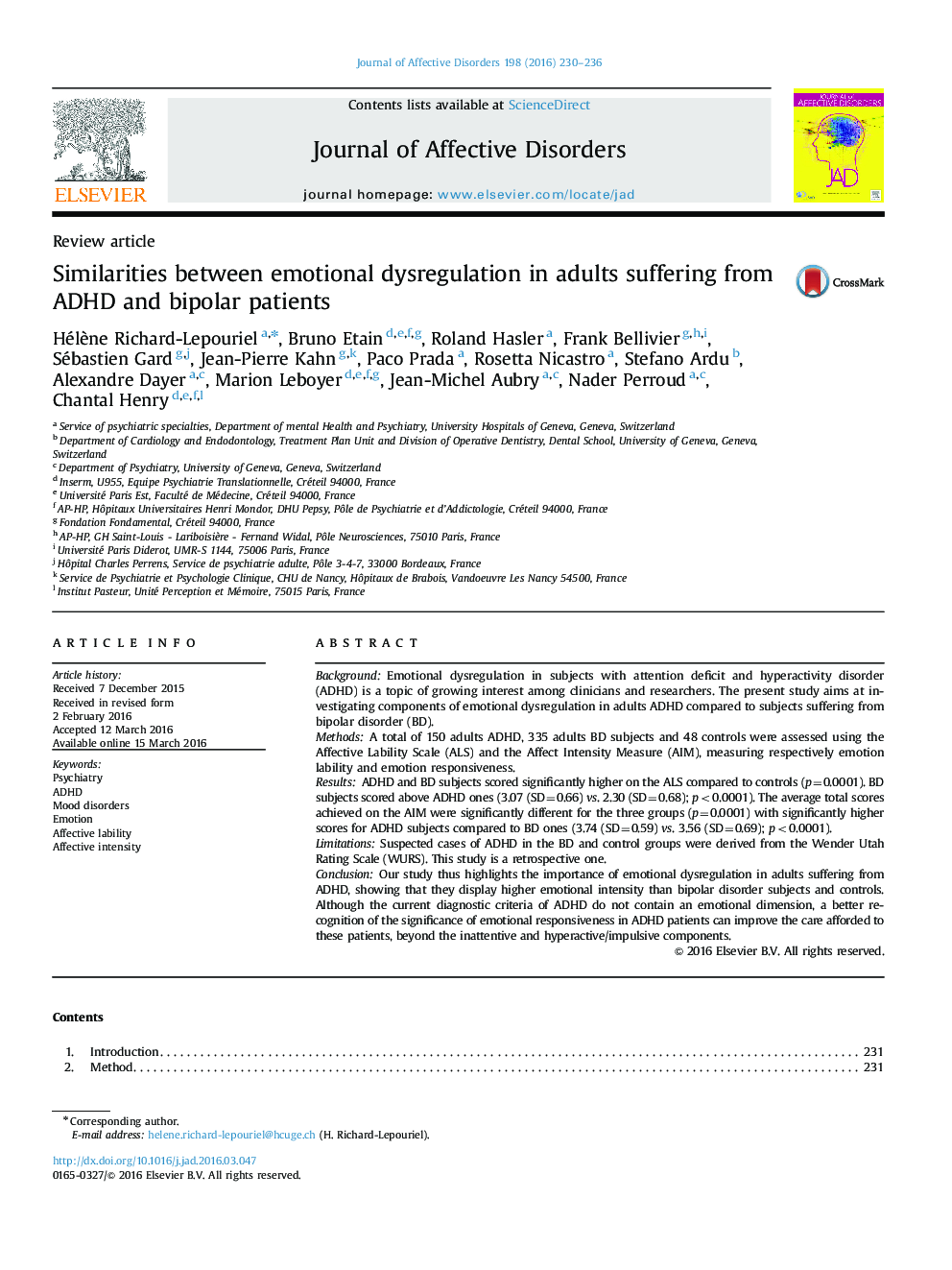| Article ID | Journal | Published Year | Pages | File Type |
|---|---|---|---|---|
| 6230227 | Journal of Affective Disorders | 2016 | 7 Pages |
â¢Some researchers support emotional dysregulation as a third dimension in ADHD.â¢ADHD and BD patients scored higher on the Affective Lability Scale versus controls.â¢ADHD patients scored higher on the Affect Intensity Measure versus BD patients.â¢AHDH severity was correlated with higher emotional lability and intensity.â¢Clinicians should be aware of emotional responsiveness in ADHD.
BackgroundEmotional dysregulation in subjects with attention deficit and hyperactivity disorder (ADHD) is a topic of growing interest among clinicians and researchers. The present study aims at investigating components of emotional dysregulation in adults ADHD compared to subjects suffering from bipolar disorder (BD).MethodsA total of 150 adults ADHD, 335 adults BD subjects and 48 controls were assessed using the Affective Lability Scale (ALS) and the Affect Intensity Measure (AIM), measuring respectively emotion lability and emotion responsiveness.ResultsADHD and BD subjects scored significantly higher on the ALS compared to controls (p=0.0001). BD subjects scored above ADHD ones (3.07 (SD=0.66) vs. 2.30 (SD=0.68); p<0.0001). The average total scores achieved on the AIM were significantly different for the three groups (p=0.0001) with significantly higher scores for ADHD subjects compared to BD ones (3.74 (SD=0.59) vs. 3.56 (SD=0.69); p<0.0001).LimitationsSuspected cases of ADHD in the BD and control groups were derived from the Wender Utah Rating Scale (WURS). This study is a retrospective one.ConclusionOur study thus highlights the importance of emotional dysregulation in adults suffering from ADHD, showing that they display higher emotional intensity than bipolar disorder subjects and controls. Although the current diagnostic criteria of ADHD do not contain an emotional dimension, a better recognition of the significance of emotional responsiveness in ADHD patients can improve the care afforded to these patients, beyond the inattentive and hyperactive/impulsive components.
